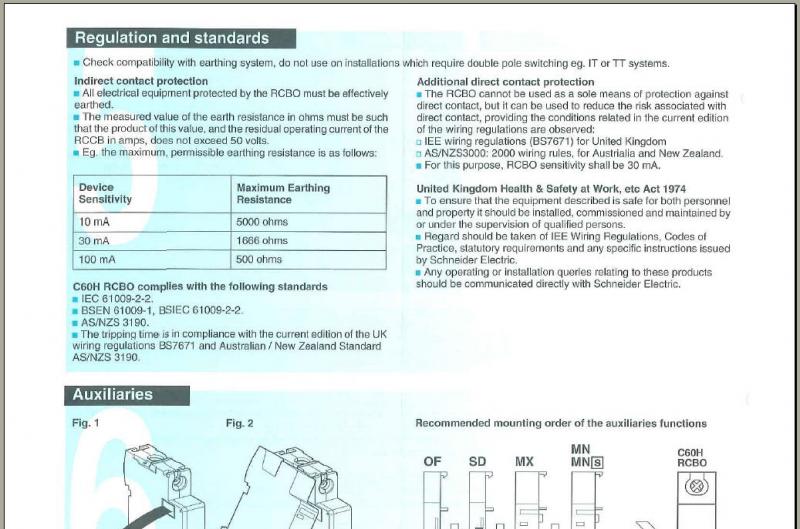I suggest you take that up with the French and the IEE because until the definition in 7671 changes they are still Consumer Units. And why and earth would anyone want to complicate things and call them anything else?The discussion also seems to focus on the provision of RCD protection within these 'CUs' - people really must stop calling them Consumer Units - the French think we eat them if we call them that - the term used by the UK in Annex ZA of BS 60439-3 in 1994 was Customer Distribution Board (CDB).
Apart from domestic installations, I can't think of any other installation configuration where a minor single circuit fault will knowingly trip other circuits and the fault free circuits can’t be reset.It would appear then that we are only considering the application of 314 to a limited sub-set of electrical installations when, in fact, it applies to all electrical installations.
Page 23 - 26 of the 17th OSG
Fig 3.1
• The four RCD protected circuits are un-maintainable without tripping the RCD which would affect the other three circuits. That does no meet 314.1 (ii)
• If the fault was on a non-lighting circuit but a lighting circuit was one of the four connected to the single RCD that does not meet 314.1.(iii)
• If an N-E fault developed on one of the four circuits it could not be isolated so the other three would be affected until the fault was cleared. Without knowing when the fault might occur and how long the repair would take nobody can claim to have met 314.1 (i).
Fig 3.2
• The four 30mA RCD protected circuits are un-maintainable without tripping the RCD which would affect the other three circuits. That does no meet 314.1 (ii)
• The four 100mA circuits are un-maintainable without tripping out the main 100mA which would affect all eight circuits. That does no meet 314.1 (ii)
• If the fault was on a non-lighting circuit but a lighting circuit was one of the four connected to the single RCD that does not meet 314.1.(iii)
• If an N-E fault developed on one of the four 30mA RCD circuits it could not be isolated so the other three would be affected until the fault was cleared.
• If an N-E fault developed on one of the four 100mA RCD circuits it could not be isolated so the other seven would be affected until the fault was cleared.
• Without knowing when the fault might occur and how long the repair would take nobody can claim to have met 314.1 (i).
Fig 3.3
• Meets all parts of 314 for TN installations.
• May meet all parts of 314 for TT installations as long as a 100mA TD RCD is not used as an incomer. However, Merlin Gerin don't agree and their RCBO's can't be used on TT installations.
Fig 3.4
• The two sets of four 30mA RCD protected circuits are un-maintainable without tripping the RCD’s which would affect the other three circuits. That does no meet 314.1 (ii)
• If the fault was on a non-lighting circuit but a lighting circuit was one of the four connected to either of the RCD’s that wouldn’t meet 314.1.(iii)
• If an N-E fault developed on one of the four 30mA RCD circuits it could not be isolated. So the other three would be affected until the fault was cleared.
• If an N-E fault developed on one of the four 100mA RCD circuits it could not be isolated. So the other three would be affected until the fault was cleared.
• Without knowing when the fault might occur and how long the repair would take nobody can claim to have met 314.1 (i).
Fig 3.5
• The same as 3.4
So IMHO, for TN installations, the only satisfactory solution is Fig 3.3 and for domestic TT installations...who knows
Edit...changed my mind


